November 11, 2023
- Sarah
- Nov 12, 2023
- 2 min read
With the fall color fading outside of the bedroom window, which now frames the blue morning sky and rustling, bare branches, the thought of the tamaracks glowing in the morning sun drew us out of the bed and into our boots.

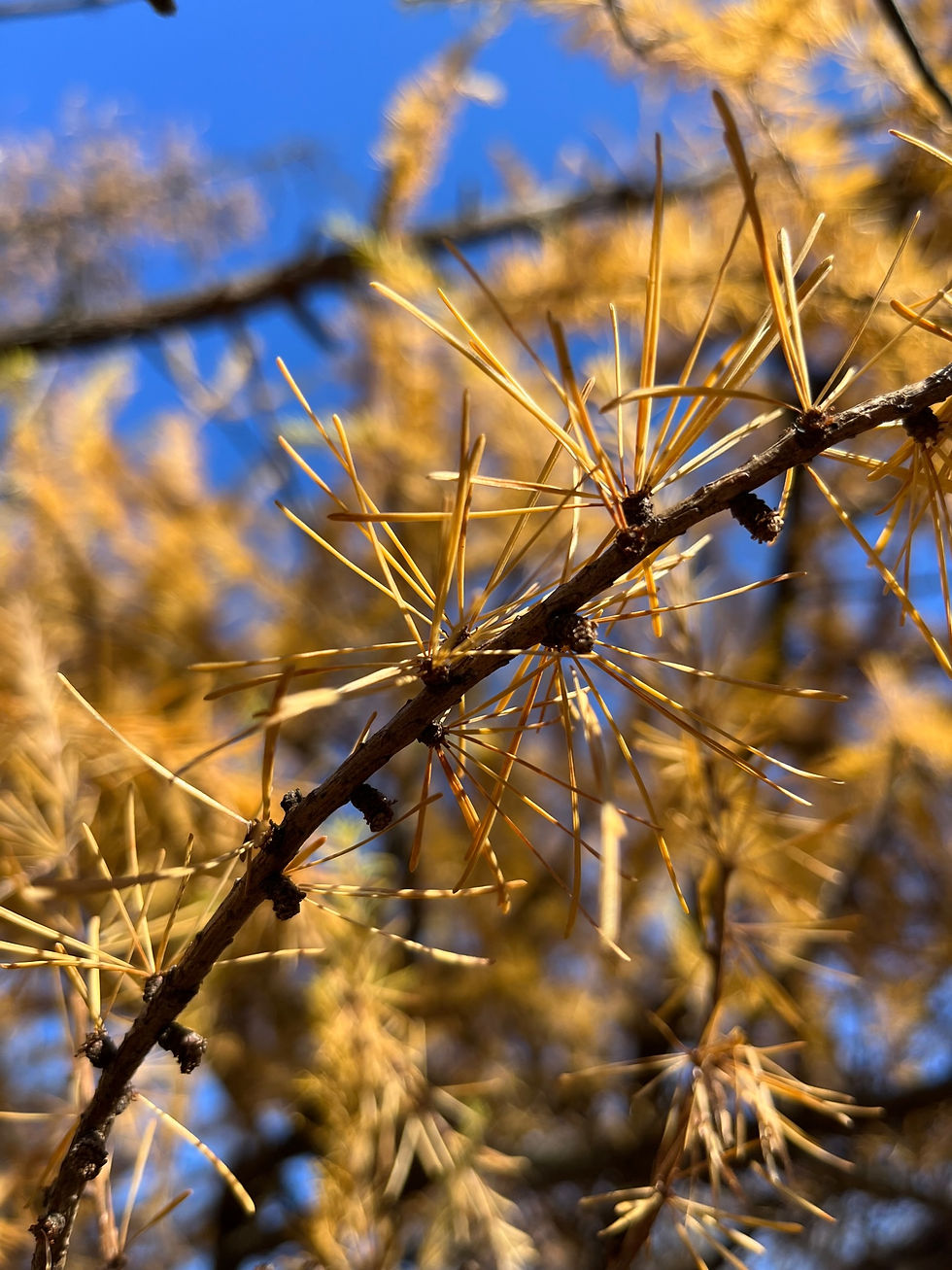
The tamarack (Larix laricina), also known as the American larch, is a rare example of a deciduous conifer. Despite having delicate needles and tiny cones, this species is not an evergreen. Each fall, the needles take on a golden hue that fades to a duller yellow before falling to the ground. With the sun rising behind them, the tufts of needles fanning from the branches appear to glow. The needles feel soft and feathery against my palm, fluttering downward at the slightest nudge. I try to avoid touching them to preserve their beauty for these last days before the wind carries the rest of them to the marshy moss below.
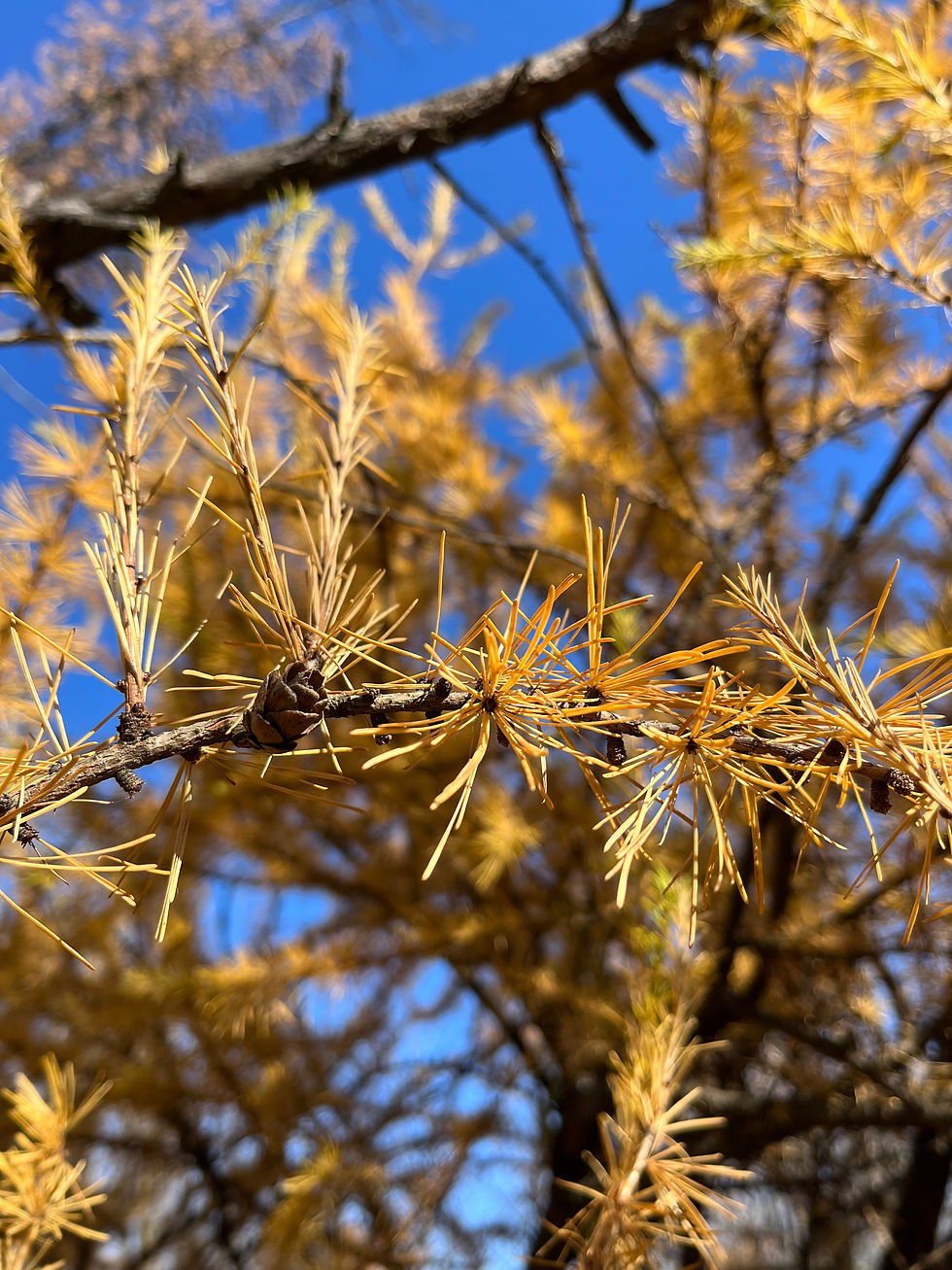
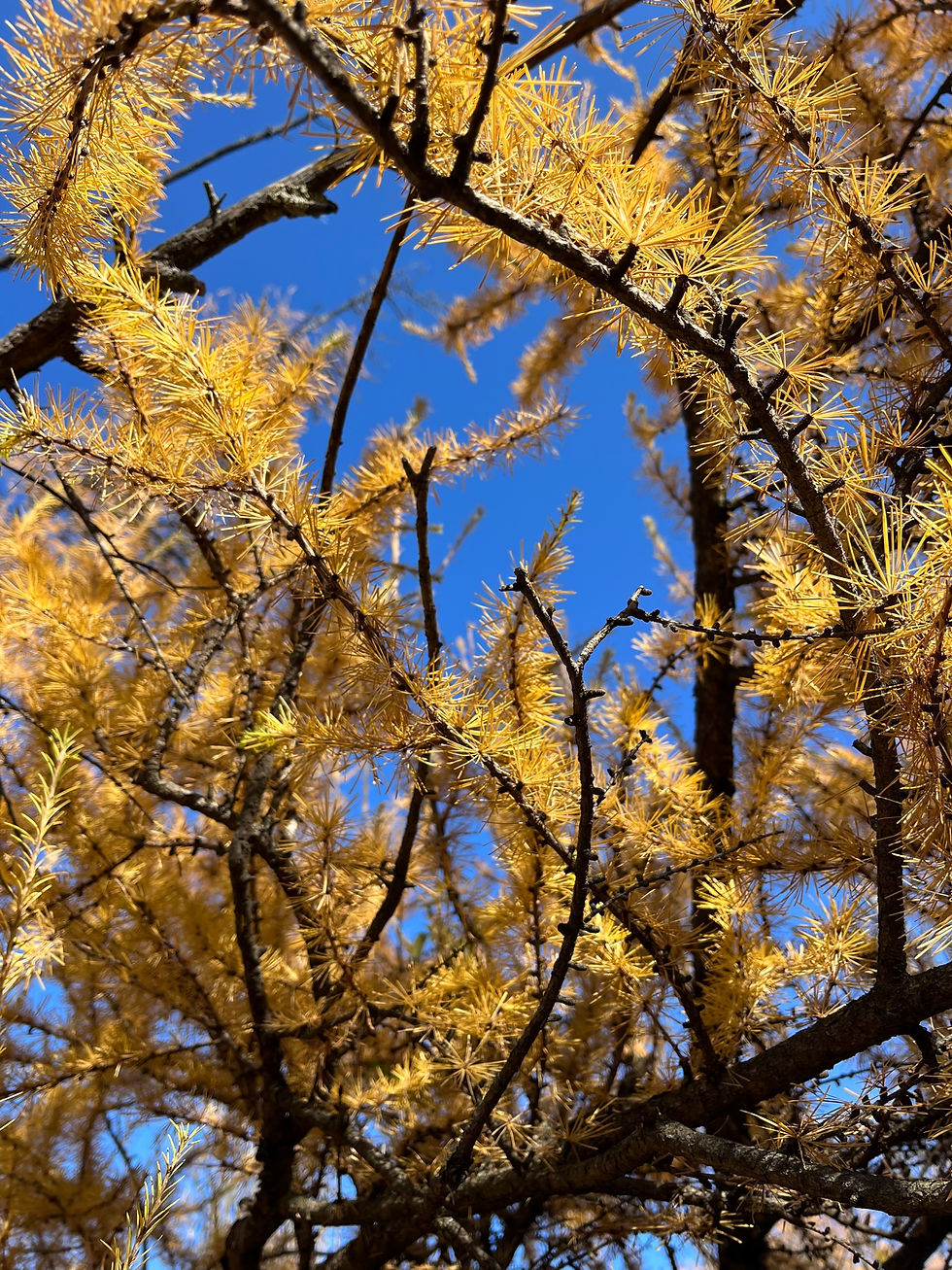

Tamaracks favor cold, damp soil, often growing in pure stands that give them the appearance of a boggy island. As we ducked between branches to reach the center of the stand, our feet pressed into the vibrant sphagnum moss, creating ephemeral pools of chilly water in our tracks. The Algonquin name refers to its use for making snowshoes, and their native range extends through the boreal regions of the Northeastern United States and Canada.

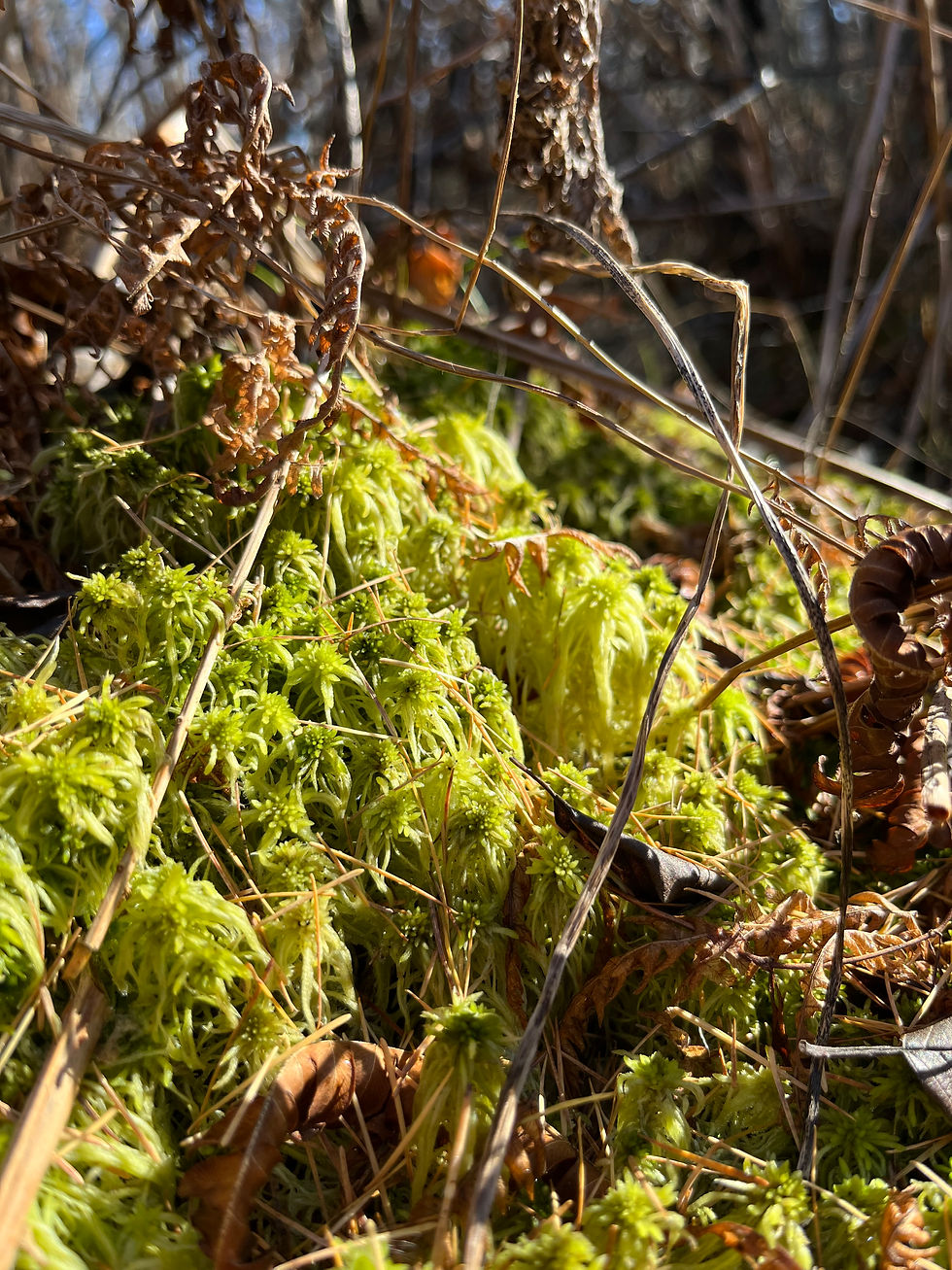
We stop to inspect the cones more closely, and then kneel to press our hands into the tussocks of moss below, feeling the surprising amount of water held within each of the minuscule leaves.
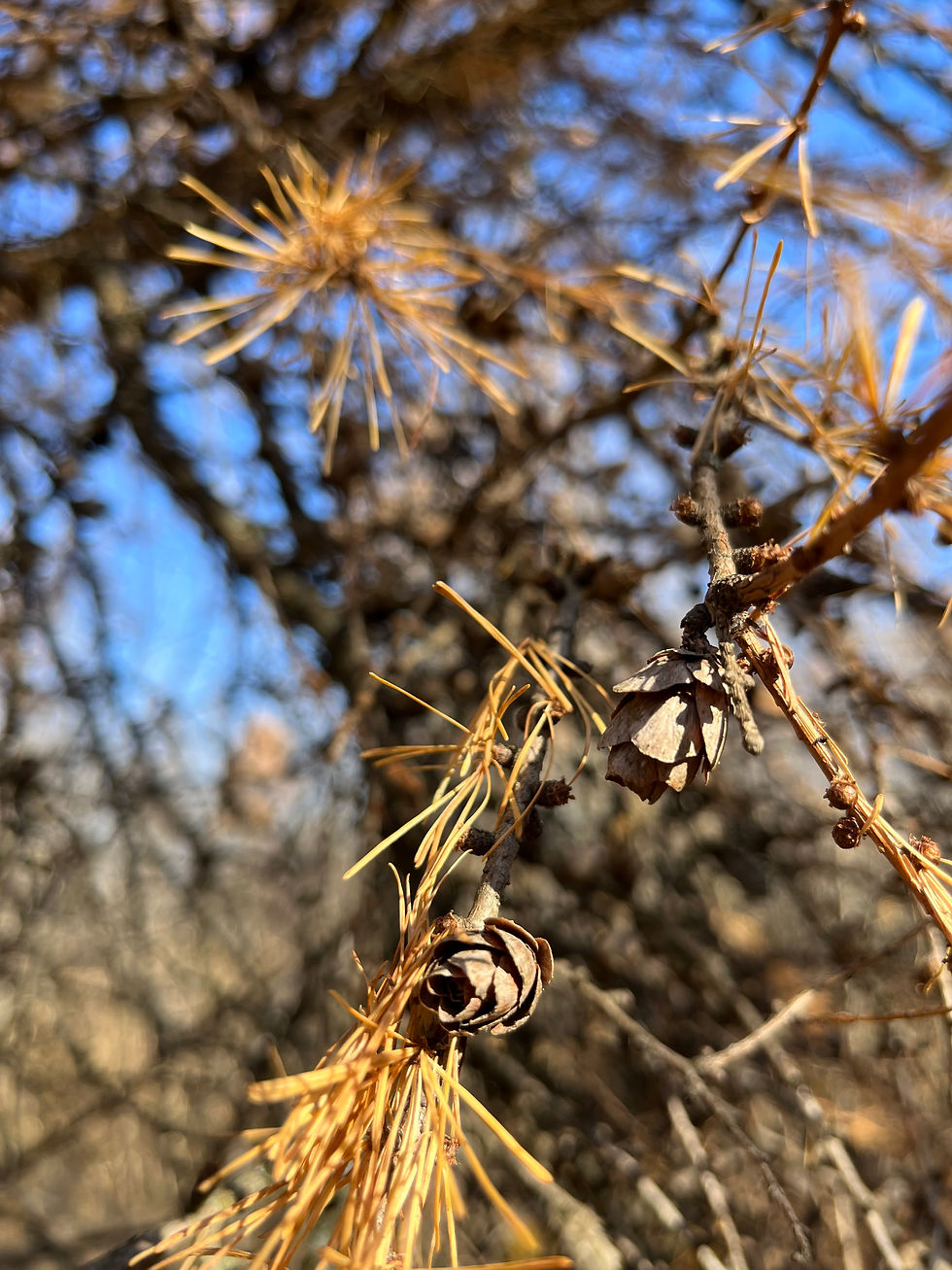

Before leaving, I pause to take in the tamaracks, not knowing if their needles will still be held in contrast with the bright sky on my next visit.



Comments